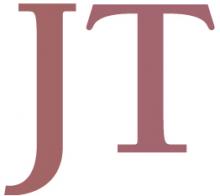You are here
Jordan 2025 vision sets the path for the future
May 11,2015 - Last updated at May 11,2015
It is not easy for a small country like Jordan to make long-term plans in a volatile region like the Middle East, where anything can happen.
Nonetheless, such plans are a must, provided they are evolutionary and take into account best- and worst-case scenarios.
This is the case with the “Jordan 2025 vision and national strategy”, a document that was launched yesterday in the presence of Their Majesties King Abdullah and Queen Rania to chart a 10-year strategy for the country in various sectors.
Jordan, which always took the brunt of regional and international crises, hosting wave after wave of refugees, suffering because of the rise in energy costs and struggling to find more water for its increasing population, is still defying all odds to try to improve the lot of its citizens and its economy.
The host of challenges, both internal and regional, make it incumbent on the country to be well prepared for any eventuality as it aspires to achieve economic growth; hence the Jordan 2025 vision and national strategy which has been in the making over the past months following Royal directives.
The document was adopted following dialogue-based participatory methods that involved stakeholders in various fields, in the private and public sectors as well as civil society organisations and Parliament, according to the Ministry of Planning and International Cooperation.
The ministry, in cooperation with other government departments and private sector organisations, will be working on translating the vision and the national strategy through three consecutive executive development plans to be incorporated into projects over the next decade, according to Planning and International Cooperation Minister Imad Fakhoury.
The strategy does not name any particular project and will seek to identify priorities in various sectors, in accordance with need, impact and importance.
According to Fakhoury, a precise identification of priorities is needed when accepting suggested projects by stakeholders in various sectors.
A first look at the vision shows keenness to introduce tangible improvements to key economic indicators, such as raising GDP growth rate from 3.1 to 7.5 per cent, raising government efficiency from 49.8 to 65 per cent, boosting women’s participation in the labour market from 15 to 24 per cent, decreasing poverty rate from 14 to 8 per cent and unemployment from 12.2 to 8 per cent.
These are all commendable goals that we should aim to achieve, and maybe to shoot beyond as we revise the evolutionary vision every now and then.
One example that needs more focus is the attempt to increase the share of renewable energy in the national energy mix from 1.5 to 11 per cent, which seems very modest, particularly when compared to what other countries of the world have achieved or are aiming to achieve.
The hope is that this national effort will pay more attention to increasing dependence on renewable energy in a bid to resolve the country’s chronic energy crisis, which has driven the budget deficit and public debts to unprecedented levels over the past several years.
The pace of moving towards renewable energy has been very slow for a country under great strain, particularly with regards to offering citizens incentives to own and operate their own renewable energy generators and devices, as the government set maximum limits for what a household can produce in order to protect a number of existing, and even future, investors.
The aim should be to liberalise the market, reduce energy imports, encourage people to invest in green energy and protect the environment.
The fact that this commendable national vision will be evolutionary and participatory should allow for improvements every now and then, particularly once the public start to scrutinise it and critique it in a transparent and constructive manner.
One final point to be made is that the biggest obstacle which will be facing this effort is funding, which one hopes will be coming from international donor states and organisations that show understanding of the obstacles facing Jordan and appreciate its importance and key role at various levels.













